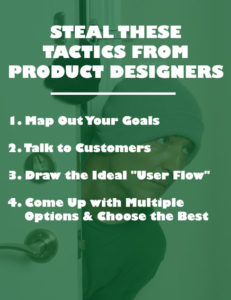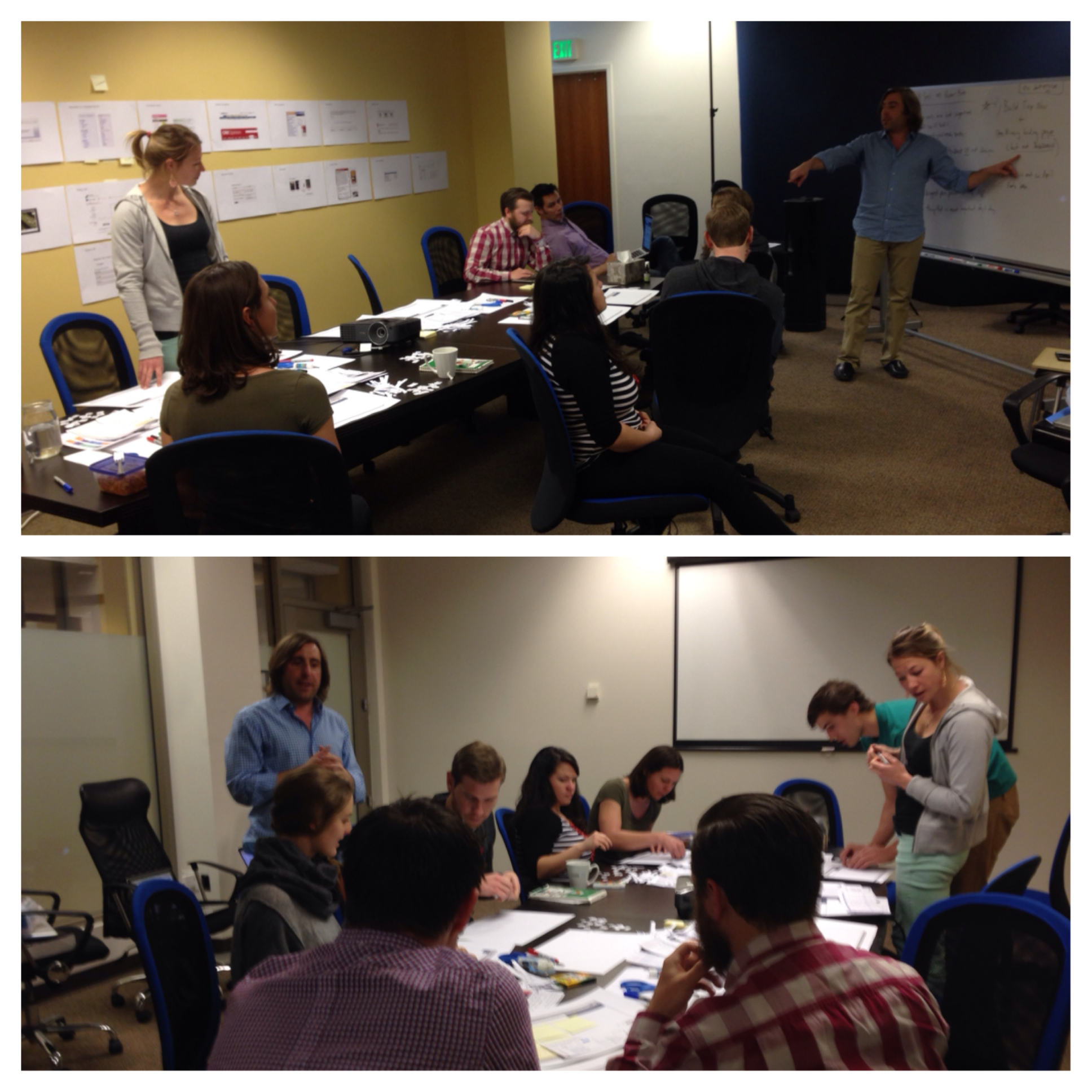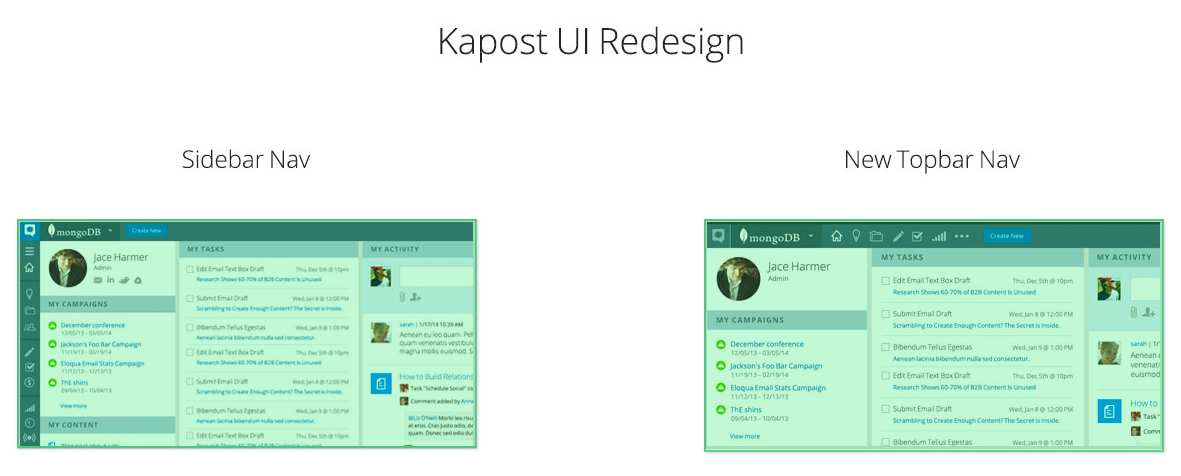 The product team here is always pushing to make the user experience easier, faster, and more flexible. Recently, we realized that meant the main navigation was due for a facelift.
The product team here is always pushing to make the user experience easier, faster, and more flexible. Recently, we realized that meant the main navigation was due for a facelift.
But as we set out on the process of redesigning Kapost’s UI, there were several steps that translated into effective marketing tactics. In fact, if content is the product that marketing is charged with making, then there are lessons you’ll want to steal from product designers. Here are a few.
1. Map Out Your Goals First
This may sound intuitive, but you’d be surprised how often this step is skipped. If you neglect to list your goals, it becomes harder to nail down which tweaks and suggestions will get your product where it needs to be—especially as more stakeholders chime in.
As we set out on a UI redesign, we first catalogued the following goals:
- Make it easier for users to get to the most important areas of the application.
- Better align our navigation with how our product is being used. We see that the best marketers follow a process of Strategy, Ideation, Planning, Production, Publishing, Promotion, and Analytics. This is how the sausage is made. We want our product and its structure to represent that flow.
- Better utilize the vertical space of the page. The top left area of the page is a valuable and finite resource. Currently we waste too much of it.
This was about our product, but content marketers should do the same. If you’re creating content, particularly with several collaborators involved, you need to set out a clear, buyer-centric purpose from the start.
2. Talk to Customers
In our world, our customers are literal users of Kapost. We not only asked their opinion about how the UI could be improved, we also watched how they used Kapost. Observing how the product is actually used in the wild immediately clarified which features needed to be highlighted.
For content marketers, your customers is your audience. Similarly, you need to not only ask them their content needs and preferences, but watch how they currently digest and engage with content. What stage of their journey is content targeting? How much time are they spending on your site? Are particular themes and topics resonating most?
These questions, and the analytics that help answer them, can determine what adjustments you need to make in your strategy.
3. Draw the Ideal “User Flow”
Once we had some user feedback, we wanted to actually draw out the ideal navigation from heavy users’ perspectives. So we turned to our own internal content marketing team. We broke into 5 teams of 2 people. Each team took construction paper, glue sticks, scissors, and markers and created a navigation structure and homepage they would want.
This is a technique called “paper prototyping,” a type of “close-ended” or “throwaway” prototyping. This method is an extremely efficient tool for identifying user expectations and needs, and while it seems like a pretty basic exercise, it’s one of the best ways to model interface paradigms and build great products.

That exercise revealed patterns and common desired navigational flows.
Here’s the cool part. Content marketers can do the same thing. As you consider how you want your audience to explore your content, which calls to action you want them to follow, or how each asset in a campaign supports the next asset, consider actually drawing these out as a team. You’ll get a better sense of how potential buyers are experiencing your content.
4. Come Up with Multiple Options, Then Choose the Best
From the exercise above, our product team distilled the feedback and built two click-through mockups to support the participatory design. In one, the navigation is condensed and at the top of the page—a more traditional menu structure. The other has the navigation on the left of the page—a more modern method.
With those two designed, we then set off and met with 20 current customers and presented them with the two options:

Based on feedback and more internal discussions, we’ve decided to move ahead with the left-based navigation. (As we forge ahead, expect more articles on our progress.)
The applicable lesson for content marketers is not to assume one option is the best. Close the feedback loop by taking your discoveries to the wider team and your audience. Options allow you to find that one last suggestion you didn’t consider, or a critical hole in how a buyer will move from an eBook to a webinar to a call with a sales rep.
Content is your product. And like any product, tweaks, adjustments, and feedback are needed to stay relevant.
Note: if you’re a Kapost customer, expect this redesign to occur at the end of Q2. We will keep writing about it and its impact on this blog, but please don’t hesitate to reach out to us to learn more about what it will entail.

